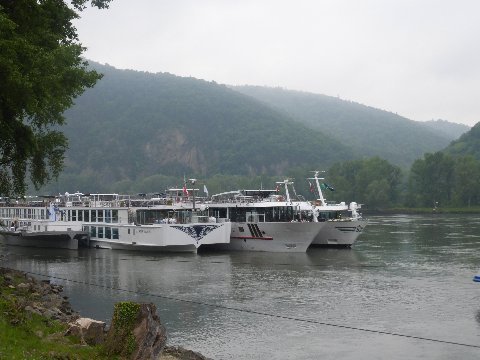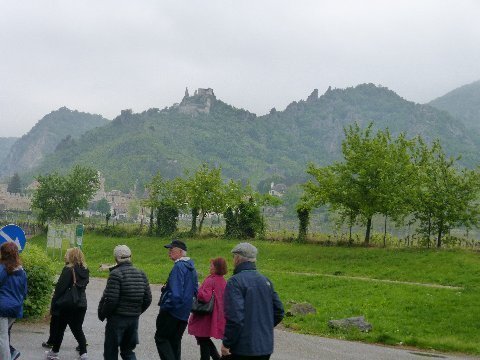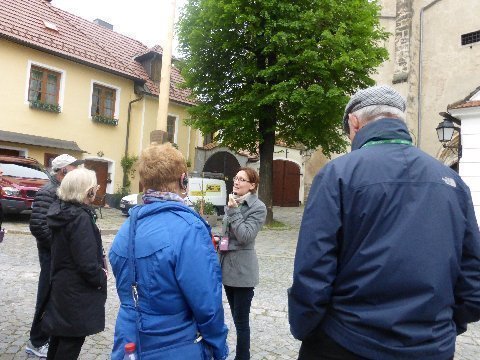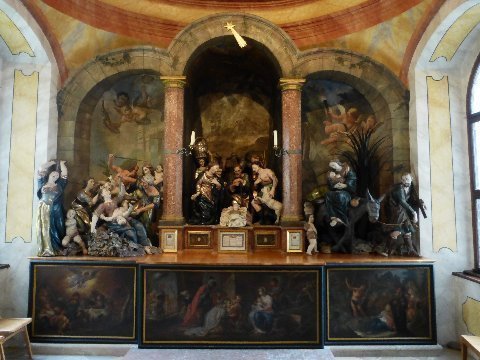Picto Diary - 12 May 2016 - Durnstein

Above: Riverboats dock on the Danube at Durnstein. Durnstein, Austria, 12 May 2016.
The Tauck "Savor" is on the outside. The longest of these Danube river boats run 142 meters long. A football field and a half. The ships carry up to 125 passengers and 25 crew.
The water depth of the Danube is variable. Average depth is about 25 feet. Depth before a lock can reach 400 feet. The boats' draft is five and one half feet. Spring time navigation is "no problem" according to our captain, but, late summer water levels can make navigation more dicey though not prohibitive.
Flood events of one kind or another.... too much water from Spring runoff, or even improper dam/lock operation.... happen every five years. 2013 was the last 100 year event when water levels reached so high that all navigation was halted.
While walking through towns along the way, guides pointed out, on the sides of buildings, the high water marks of the 2013 flood.

Above: Sightseers, foreground. Durnstein Castle, background. Durnstein, Austria. 12 May 2016.
A well-known place and tourist attraction along the Danube in Austria is Dürnstein, where King Richard the Lion-Heart of England was held captive (in the castle) in1192 for ransom by Austrian Duke Leopold V during his (Richard's) return from Jerusalem and the third Crusade.

Above: Hannah, Austrian local tour guide during our visit to Durstein, Austria. 12 May 2016.
Most of our local guides throughout our Danube River riverboat tour have spoken impeccable English.
The guides speak with accents, to be sure. But, their grammar and usage is near perfect. Who makes a point of differentiating between "who" and "whom" any more? These guides do.
They use American colloquialisms comfortably. "Lets do this...."
Some of them have learned English from non native speakers. So, you can occasionally hear pronunciation quirks... one guide in Prague would say, "bee koo az" meaning "because." Notwithstanding, this particular guide spoke the language better than 95% of English speakers (in my experience).
Almost without exception, the guides knew their subjects in depth. At times I thought to myself, "these people are overqualified. What are they doing as tour guides (not to demean the avocation)?"
If the English language is preserved in the future in correct grammatical usage, it won't be by Americans, but by Europeans who speak English as a second language.

Above: Manger diorama. Cloister, Parish Church of Durnstein. Durnstein, Austria. 12 May 2016.
Tauck tour goers were invited into the Benedictine monks' cloister, not normally open to the public.